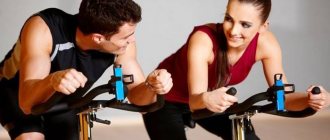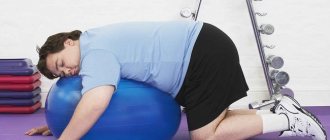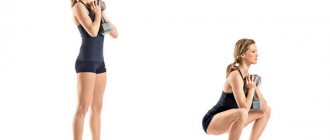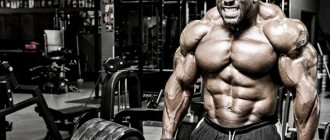8-Drawing up a program and your belief in it
It is not genetics or drug use that turns the middle class into an elite. It is their intuition and ability to practice consciously that brings them the best results. In a sense, the loads must be in touch with your athletic part of the soul. The program should resonate with you in a way that evokes passion and inner drive. Because when this comes, you will start working and will do it more consistently. It is unlikely that you will start training or do it regularly if you do not have faith in the program. It's about passion and desire. If someone's skills are stronger, they'll likely perform better... even if the program looks pointless on paper. Someone can give you the perfect preparation plan based on research and science, but if you hate it, the results will be miserable. It's because he didn't touch your heart. This is the invisible part of preparation that science cannot explain. You must develop a training plan that resonates with your goals, needs and who you are. Desire gives rise to necessity. And with this need for hard work, regularity is born.
More interesting on the topic:
— Training program for girls: The Bible of women's training
— 5 best chest training programs
Creating a training program for muscle growth and strength development[edit | edit code]
Yuzhakov Anton How to create a training program in natural training.
Yuzhakov Anton How to create a training program
Yuzhakov Anton Load cycling in BB
Yuzhakov Anton Load periodization in BB
Drawing up a training plan taking into account time constraints
Planning training to increase strength.
This article tells you how to independently create a training program that will be ideal for you, describes in detail the basic principles of construction depending on your goals (gaining mass, increasing strength, or working on relief), and lists the rules that must be used when choosing an exercise , and what to consider, outlines the basics of split training and discusses common mistakes.
The structure of strength training, the order of exercises performed, the importance of warm-up and cool-down
This manual is based on the work of Christian Thibado, a long-time weightlifter and specialist in developing training programs. To achieve a good result, you must carefully study each and every step, which are given in sequential order:
- Choosing a training goal
- a training program should not pursue several goals at once. The same applies to diet and choice of sports nutrition. - Drawing up a split program
- the modern principle of training involves training different muscle groups on different days. This step needs to be given special attention. - Number of repetitions for mass and strength in the exercise
- Number of approaches per muscle group
- Number of exercises per muscle group
- Choosing exercises in bodybuilding
- The best exercises for gaining muscle mass
- Exercise speed
- The order of doing exercises in the gym
- Rest between exercises and sets
- Rest between workouts
- Optimal training duration
- Best time to train
- Advanced techniques in bodybuilding
- Electronic training diary
This list contains well-systematized, proven and only necessary knowledge on strength training. You can find additional information in the thematic section.
| Paragraph | Purpose of the training | ||||
| Force | Explosive force | Hypertrophy | Endurance | Speed | |
| Load (% of 1RM[1]) | 80-90 | 45-60 | 60-80 | 40-60 | 30 |
| Repetitions per set | 1-5 | 1-5 | 6-12 | 13-60 | 1-5 |
| Sets per exercise | 4-7 | 3-5 | 4-8 | 2-4 | 3-5 |
| Rest between sets (min.) | 2-6 | 2-6 | 2-5 | 1-2 | 2-5 |
| Duration (seconds per set) | 5-10 | 4-8 | 20-60 | 80-150 | 20-40 |
| repetition rate (% of max) | 60-100 | 90-100 | 60-90 | 60-80 | 100 |
| Workouts per week | 3-6 | 3-6 | 5-7 | 8-14 | 3-6 |
| Table from the book “Supertraining” by Mel C. Siff, 2003 | |||||
Author's word[edit | edit code]
This article reveals to the reader the strategy and tactics that allow you to independently create an individual training program. Bodybuilding and fitness trainers who write for magazines usually offer a wide variety of variations and sometimes bend some of the rules I outlined. However, you should understand that in order to circumvent the rules (without loss of quality and efficiency), you must carefully master the basic knowledge. If you want to create advanced programs for yourself or other people, then you need to start with practical work on composing classical programs. Then you will no doubt learn to develop advanced techniques as needed.
In other words, you first need to get a self-educated diploma, and only then think about a dissertation. Take your time, apply this knowledge wisely, step by step, and before you know it, you will begin to create reasonable, logical and effective training programs yourself.
Material evaluation[edit | edit code]
One famous trainer was asked to evaluate the work of Christian Thibadeau, “How to create a training program.” He said: “From now on I hate him because he revealed all the top secrets of professional trainers.”
Group monthly workout plan
Group monthly workout plan
____Group Trainer_______
____________________
| Main training objectives | Basic training aids | Days of the month | Total volume per month |
Individual monthly training plan
____Athlete Coach_______
____________________
| Main training objectives | Basic training aids | Days of the month | Total volume per month |
| 5 etc |
Individual weekly training plan
____Athlete Coach_______
____________________
| Main training objectives | Basic training aids | Days of the month | Total volume per month | |||
| Mon | Tue | Wed | Thu | Fri | Sat | Sun |
All training plans, regardless of their type (team and individual annual and operational, etc.) must include:
1. information about those for whom the plan is designed (personal information about the athlete or general characteristics of the team);
2. targets (main goals of the period for which the plan is being drawn up; intermediate goals for individual stages; private goals related to various types of training);
3. indicators that can be quantified and characterize training and competitive loads and the condition of athletes;
4. training and educational guidelines;
5. timing of competitions, control testing, sports and medical examinations.
By periodically comparing the actual changes in controlled indicators with the planned ones, it is possible to promptly detect deviations in the use of training means and methods. At the same time, it is possible to evaluate the effectiveness of the means and methods used by analyzing their effect on the athlete’s body.
The scientific and methodological prerequisites for planning training in each sport should be the following knowledge:
a) for long-term and annual macrocycles - individual characteristics of the development of the sports form of an individual athlete, and in team sports - the team as a whole; specific features of long-term adaptation of the body to this type of muscle activity;
6) for a separate stage (mesocycle) - fundamental trends in the dynamics of the athlete’s condition in connection with the given training load, including depending on its content, volume, intensity and alternation;
c) for a microcycle - appropriate forms of combining short-term training effects of loads of various sizes and primary directions (the timing and completeness of restoration of the body’s special performance, depending on the volume, intensity and direction of the given loads).
20.2. Planning of sports training in multi-year cycles
The initial data for drawing up long-term (long-term) plans are the optimal age for achieving the highest results, the duration of training to achieve them, the rate of growth of sports results from category to category, individual characteristics of athletes, conditions for sports activities and other factors. Based on the characteristics of the athlete, the goals and objectives of long-term training, sports and technical indicators are determined by stages (years), the main means of training, the volume and intensity of training loads, and the number of competitions are planned. Those aspects of the athlete’s preparedness are noted on which the main attention of the coach and athlete should be focused in order to ensure the achievement of the planned indicators.
The long-term plan should include stages of preparation, the primary focus of training at each of them, and the main competitions at the stage. The number and duration of competitions depend on the structure of long-term training in a given sport, the calendar of public sports events and other factors.
Long-term multi-year training plans are drawn up both for a group of athletes (3rd and 2nd categories) and for one athlete (who has achieved 1st category and higher results).
The group plan must contain data outlining the prospects and main directions of training for the entire group. It should reflect the trend toward increasing requirements for various aspects of an athlete’s training, and the specific indicators of the plan by year should correspond to the level of development of athletes in this group.
An individual long-term plan contains specific indicators that are outlined by the coach together with the athlete based on an analysis of previous training experience (the athlete’s actual implementation of sections of the group plan) taking into account his individual characteristics.
Drawing up a long-term plan should not be reduced to a mechanical reproduction of several annual plans, with constant repetition of the same tasks of the same content from year to year. It is necessary to reflect the trend of requirements for various aspects of an athlete’s preparedness increasing from year to year and to provide for a consistent change in training objectives, training loads, control standards and other indicators in each year of training. The long-term plan should always be purposeful.
Beauty does not require sacrifice
No need to run in your favorite sneakers. There are professional running shoes for this. This is extremely important for the health of your joints, especially your knees. Good running shoes have cushioning technology that stabilizes the impact on your joints. It is recommended to have several pairs of running shoes: for long cross-country runs, for speed training, for cross-country running.
As a rule, beginners need shoes with increased cushioning until their running technique is perfected. You should not immediately purchase sneakers for speed training (they are also competitive models). Let us once again recall the most popular manufacturers of professional running shoes: Asics, Mizuno, Saucone, Brooks, Nike, Adidas, Hoka.
Don't forget about seasonal equipment. Don't get too cold in winter and don't get overheated in summer. Now on the sportswear market there are a huge number of different options for all weather conditions. It has been scientifically proven that bright sports equipment improves your mood and even motivates you to exercise.
Do no harm
This applies primarily to beginners. You shouldn’t rush “right off the bat” and immediately train to the point of exhaustion. Running is a fairly serious cardio load and a load on the musculoskeletal system, so it is important to make sure that it does not harm your health and you have no contraindications. To do this, you should consult a therapist and undergo a series of simple tests.
At the initial stage, you should not finish your workout in a state of extreme fatigue. This will quickly lead to overtraining and create the risk of injury. The load should increase gradually, from week to week. If you decide to start running, you need to get involved gradually. Experts recommend starting with brisk walking, periodically including light jogging, and then gradually eliminating walking. Perhaps at the initial stage, if running is still difficult for you, Nordic walking with poles will suit you.
Standard running plan for beginners*
1 Week
Fast walking (speed approximately 9 min/km). Every day, gradually increase the duration of walking from 20 to 40 minutes.
2 week
Alternating walking and running. 5 minutes walk, 5 minutes light jogging. Total duration 30 minutes.
3 week
Light jogging. Gradually, every day, increasing the jogging time from 20 to 40 minutes.
*trainings on Mondays, Wednesdays and Fridays
At the initial stage, it is recommended to perform strength training only with your own weight. For example, you shouldn’t immediately grab a fifty-kilogram barbell and do squats with it if you see someone nearby doing this exercise. But experienced amateur runners are recommended to use additional weight during strength training, but preferably no more than 15% of their own body weight.
Don’t try to chase other people’s performance and results. If your friend has a high athletic level, and you have only recently started training, then you should not try to immediately run on par with an experienced friend. This can quickly lead to injury. “The one who walks will master the road!” Therefore, do not train more or more intensely than necessary.
It is useful to take a treadmill test with a gas analyzer. The test will allow you to identify your anaerobic threshold and pulse zones in which it is safe to train. And for those who want to lose weight, this test will show those pulse zones in which you begin to burn fat.











